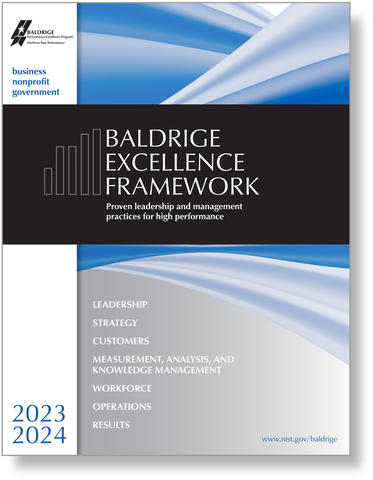Blogrige
The Official Baldrige Blog

A recent Inc.com blog post by Jessica Stillman discusses Malcolm Gladwell’s new book, Revenge of the Tipping Point. The thesis of the blog post and a theme in the book is that you can’t create a high-performing team simply by bringing together individual high performers. They need to gel as a team. Furthermore, they need to benefit from a diversity of opinion, backgrounds, generations, ethnicity, etc.
The book draws on classic research by Rosabeth Moss Kanter, a Harvard Business School professor and former Baldrige Board of Overseers member, who concluded that diversity alone is not enough for a successful team. Success requires a critical mass for each group represented so that they feel encouraged to contribute.
Gladwell has taken the research one step further with his “law of the magic third.” He concludes that for effective contribution, “the critical mass for newcomers is somewhere between a quarter and a third.” In other words, the newcomers must identify as being the same “type” as somewhere between a quarter and a third of the people in the group.
Gladwell contacted women who were among the first females to join a corporate board. When they became one of three women on the board, they say the way they perceived being treated and the way they contributed fundamentally improved.
In my career, I have worked on big teams and small teams (five people or less). And some of the most high-performing, productive, and satisfying experiences were on small teams. Why were they so successful? Obviously, the law of the magic third did not apply. Thinking about it, I have realized there was a parallel "magic three" for these teams.
Magic Three for Small Teams
The magic three for my small teams was curiosity, purpose, and inclusion.
Curiosity
In forming the teams and adding members, we sought out people who were innately curious about the world around them. Team members approached the future with optimism and enthusiasm. We believed that the unknown was worth tackling and that discovery and innovation were fun. The first such groups I was on were groups of scientists, so their natural inclination from the get-go was to discover and innovate. I learned from that experience and have always sought to build the same enthusiasm in all the teams I have joined.
Look at your own organizations. These are the people who not only accept change but are change leaders. They are (intelligent) risk takers. They love to ask, “What if?”
Purpose
These teams had a collective sense of purpose. We loved BHAGs (big, hairy audacious goals). We had a belief that quality of life could be made better for large groups of people and that operations could be more effective and efficient. We came to work (almost) every day eager to engage in our work and with each other. The menial tasks that accompanied the more challenging work were considered equally important and worth doing because they were necessary to achieve the “goal.” We celebrated successes frequently, even small ones, and helped each other through the disappointments.
Look at your own organizations. These are the people who truly understand your mission and show great dedication to your work. They are willing to challenge decisions and actions that are distracting or taking you down a questionable path. They are eager to answer questions that start with “Why?”
Inclusion
These were teams, though small, that had a diverse membership. They were intentionally composed of people who differed in characteristics such as education, skills, race, and geographic origin. Everyone’s opinion was sought and equally valued. People eagerly shared their thoughts and never hesitated to voice them. We supported each other in work and in our personal lives. We learned to anticipate and appreciate each other’s needs. We held ourselves accountable because not meeting our commitments was personally unacceptable to each of us. And we were committed to team learning and continued learning for each of us on the team.
Look at your own organization. These are the people who care about all their colleagues. They are effective two-way communicators who listen well and politely contribute their ideas. They love to ask, “What do you think?” and “How are you doing?”
Valuing People
As I look back at these teams, one of the Baldrige Excellence Framework’s® core values consistently comes to mind – Valuing People. Let me quote from that core value (substituting the word team for organization):
“A team’s success depends on an engaged workforce that benefits from meaningful work, clear organizational direction, the opportunity to learn, and accountability for performance. That team must also have a safe, trusting, and cooperative environment. The successful team has a culture of equity and inclusion that capitalizes on the diverse backgrounds and characteristics, skills, creativity, and motivation of its members.”
Have you been part of a small team? Was it high-performing? How did it function and feel?

Baldrige Excellence Framework®
The Baldrige Excellence Framework® has empowered organizations to accomplish their missions, improve results, and become more competitive. It includes the Criteria for Performance Excellence®, core values and concepts, and guidelines for evaluating your processes and results.
Purchase your copy today!
Available versions: Business/Nonprofit, Education, and Health Care





